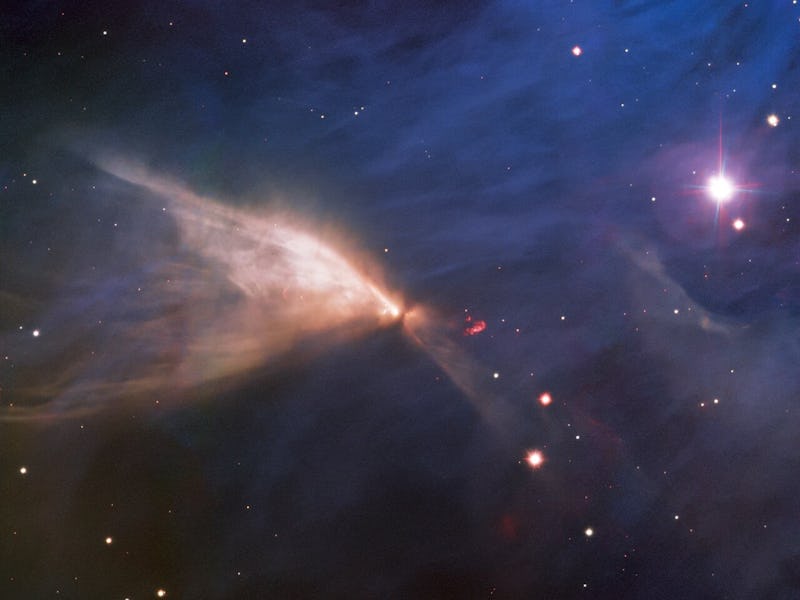Look: Gemini telescope captures a rare "cosmic butterfly" fluttering through space
The Chameleon Infrared Nebula shines in visible light.

Deep space images often narrate the poetry of the universe, with lines of cosmic gas and dust arranged in ways to paint a stunning picture of existence.
The Gemini South Observatory, located on top of a mountain in Chile, captured a nebula shaped like a one-winged butterfly fluttering through a nearby star-forming region. The nebula is powered through a stellar engine at its center, with streams of gas carving out pathways from which the star was born.
Astronomers imaged the Chamaeleon Infrared Nebula in visible light using the Gemini South’s 8.1-meter telescope on top of the Cerro Pachón mountain. The nebula gained its name because it appears bright when imaged using certain infrared wavelengths of light, but it also appears in visible light — which is the wavelengths captured in this image.
The Chamaeleon Infrared Nebula stuns in this visible light image.
The Chamaeleon is a reflection nebula, or a cloud of interstellar dust that reflects the light of a nearby star.
The star in question is at the center of the image, a young, cool star with a lower mass than the Sun. It’s emitting streams of fast-moving gas, which carved a tunnel through the cloud of dust.
That tunnel makes up the wing of this off-balanced butterfly. Infrared and visible light are making their way through the tunnel and scattering off its walls, creating the dreamy look of this particular nebula.
To the right of the star is a bright red smudge. This area marks the spot where the stream of fast-moving gas coming from the star collides with some of the slower-moving gas and dust of the nebula. This is known as a Herbig-Haro object, which forms when fast-moving gas being emitted by a young star, traveling at hundreds of kilometers per second, collides with clouds of dust and gas that surround it.
Herbig-Haro objects are often found in groups in star-forming regions. They are short-lived objects that visibly change over a matter of years. Other Herbig-Haro objects have formed along the axis of the star’s outflow of gas, although they are not pictured in the image. The one shown in the image was dubbed HH 909A by astronomers.
Another interesting feature found in the Chamaeleon Infrared Nebula is the dark band at the center. The circular structure may be a circumstellar disk, or a flow of gas and dust that orbits around the star. The view from Earth shows the disk from an angle, revealing one edge of the circular swirl.
Astronomers typically find these disks around young stars. They are the leftover material from the star’s formation, which could also be used as the building blocks of planets.
The image of the nebula features some background lighting from a nearby star that is slightly out of frame. The star’s light shines in blue.
It’s a snapshot of an active star-forming region known as the Chamaeleon I dark cloud. The star-forming cloud is part of the Chamaeleon Complex, including the Chamaeleon I, Chamaeleon II, and Chamaeleon III dark clouds.
The Chamaeleon Complex makes up the majority of the Chamaeleon Constellation, which is located just 500 light years away from Earth in the southern sky. The Chamaeleon I dark cloud is one of the nearest star-forming regions to the Milky Way, bustling with 300-400 stars.
This article was originally published on